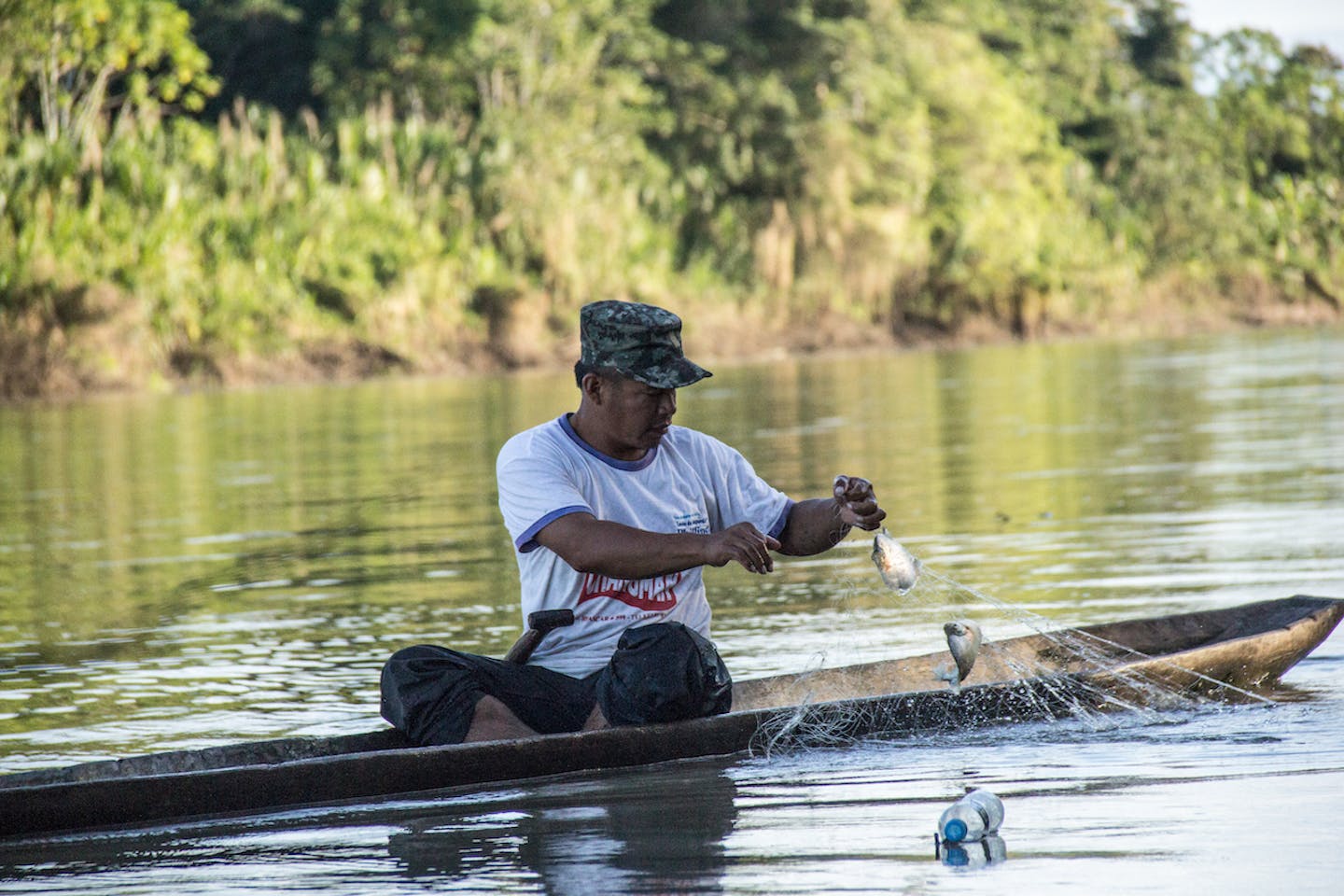The 2021 Report on the State of the Indigenous Peoples’ and Local Communities’ Lands
The Report on the State of the Indigenous Peoples’ and Local Communities’ Lands comes at a crucial time when it has become clear that achieving the ambitious post-2020 global biodiversity targets and goals will only be possible if governance authorities and managers of lands are recognized as key contributors to the conservation of biodiversity and climate change mitigation.
This recognition, safeguard, and support needs to be made through new policies at national and international levels defined by Indigenous Peoples and Local Communities (IPLC) themselves, and said policies ought to state their rights to live in their traditional territories formally and have intergenerational control and use of their communal lands, waters, and resources.
Elaborated with an interdisciplinary, co-creative, and intercultural approach, with the participation of over ten major international organizations and a bold steering and review group, the report builds on and advances previous research and reports in three core ways.
Expanding the scope of IPLC lands
First, the report expands the scope of data to include both Indigenous People’s lands and Local Communities’ lands and extends the area analyzed from 87 to 132 countries and territories.
The combination of the two types of lands is based on the understanding that they are held and governed by Indigenous Peoples and Local Communities, both of which have historically and currently contributed to conservation, demonstrating that their biocultural approach to making decisions about the management and custody of their lands, waters and ecosystems works.
This approach follows other recent studies, such as the one carried out by the Rights and Resources Initiative on the customary land rights of Indigenous Peoples, Local Communities, and Afro-descendants. In that report, 43 countries were sampled, covering half of the global land mass (outside Antarctica), and found that IPLCs hold historical or customary rights to at least 50% of the total territory in these countries. Of these IPLC lands and waters, 26% are legally recognized, and another 23% have yet to be lawfully secured.
It is noteworthy that the second pillar of One Earth’s model for the climate crisis calls everyone to do their part “to preserve 50% of the world’s land and oceans,” which is demonstrably feasible in lieu of this report’s finding. While IPLCs are custodians of many coastal and marine areas, this report is limited to the terrestrial realm due to a lack of available international coastal and marine data for IPLC-governed areas.
Updating the ecological status of IPLC lands
The second contribution of the report is that it provides an updated analysis of the ecological condition of IPLC lands, covering a broader range of sectors than are assessed in other studies.
A remarkable finding is that 65% of IPLC lands have zero to low levels of human modification, meaning that they are natural to semi-natural lands with no more than 10% modified areas due to intensive human impact — most generally not caused by the landholders themselves.
A further 27% of IPLC lands are subject to moderate forms of human modification. Thus, in total, 91% of IPLC lands are in good or moderate ecological condition, providing further evidence that IPLC custodianship is consistent with the conservation of biodiversity.
Accessing future development pressures on IPLC lands
The third contribution is examining potential future development pressures on IPLC lands. These pressures (namely, mining, oil, and natural gas extraction) potentially limit their future ability to conserve nature and its associated cultural and spiritual values.
Custodianship, a traditional way of permanently monitoring the state of natural balance and health of ecosystems, is becoming a highly risky job within communities. The report says that despite mechanisms such as the Escazú Agreement, many members of IPLCs are giving their lives to protect critical areas of the globe. Citing the Global Witness (2020), in 2019 alone, more than two hundred people were killed while defending the environment and their rights to it, 40% of whom were Indigenous People.
Furthering showcasing IPLC findings
The report also highlights and reinforces findings that have been around for over a decade.
a) While IPLC lands are diverse and often managed for values other than nature conservation per se, they have been found to overlap with many of the world’s remaining high biodiversity areas and can contain higher species diversity than state-protected areas. Experts in the field propose that this is because of their systems of practices, knowledge, innovations, and values, with associated spiritual, social, and cultural values.
b) Community governance is key. As such, IPLCs play a crucial role in nature conservation, but they often lack the support of legal recognition of their authority in this role, and their future ability to sustainably manage and conserve biodiversity is therefore at risk.
c) There is a bold legal and policy framework already in place, both internationally and nationally, in many countries that are principal contributors to biodiversity conservation and climate mitigation –also known as megadiverse countries.
Going forward
Overall, this report provides a solid framework to continue supporting Indigenous and local community-led conservation initiatives and collaborating in their processes to protect their territories.
While this is what One Earth and philanthroactivism must continue focusing on, there are other significant challenges that institutions and corporations like B-corps should take on. One is creating incentives for the private sector to divest from fossil fuels and mining and quickly transition to renewables and clean and efficient energy systems. Another is to help governments in developing countries shift gears away from national projects that destroy ecosystems and ways of life.
Surely, for generations, those who have provided a model for a harmonious way of living need to participate in new development indexes and national projects where humans and nature have equal rights to coexist and thrive.


